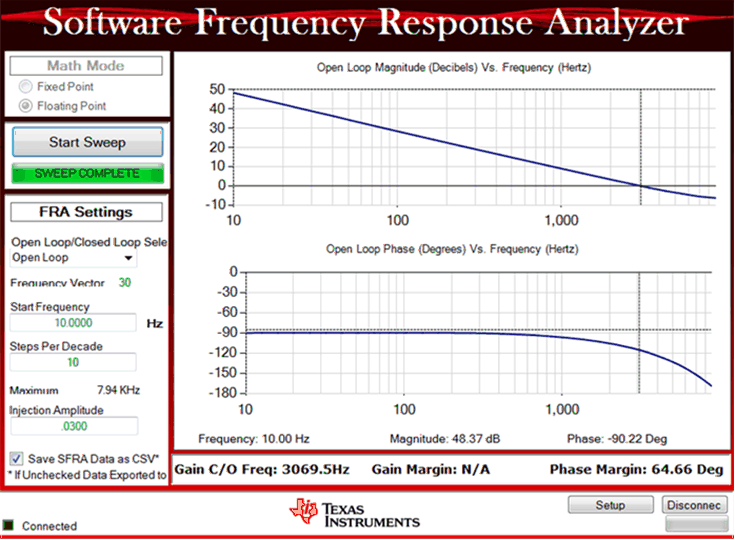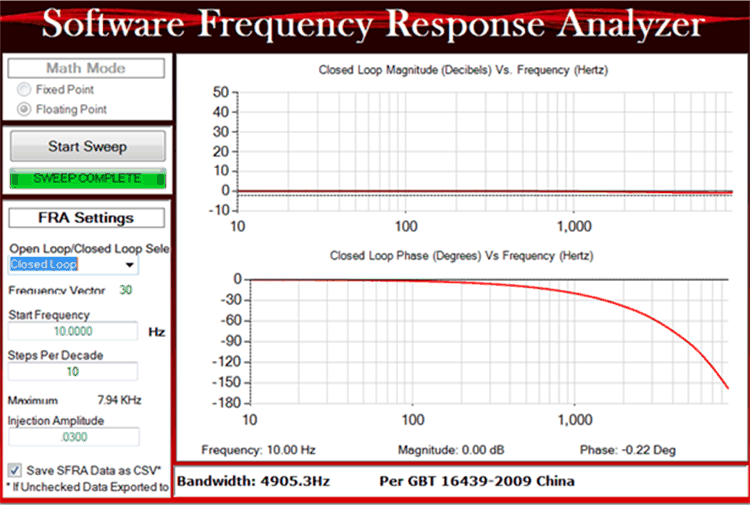SPRACO3 October 2019 INA240 , LMG5200 , TMS320F280021 , TMS320F280021-Q1 , TMS320F280023 , TMS320F280023-Q1 , TMS320F280023C , TMS320F280025 , TMS320F280025-Q1 , TMS320F280025C , TMS320F280025C-Q1 , TMS320F280040-Q1 , TMS320F280040C-Q1 , TMS320F280041 , TMS320F280041-Q1 , TMS320F280041C , TMS320F280041C-Q1 , TMS320F280045 , TMS320F280048-Q1 , TMS320F280048C-Q1 , TMS320F280049 , TMS320F280049-Q1 , TMS320F280049C , TMS320F280049C-Q1 , TMS320F28374D , TMS320F28374S , TMS320F28375D , TMS320F28375S , TMS320F28375S-Q1 , TMS320F28376D , TMS320F28376S , TMS320F28377D , TMS320F28377D-EP , TMS320F28377D-Q1 , TMS320F28377S , TMS320F28377S-Q1 , TMS320F28378D , TMS320F28378S , TMS320F28379D , TMS320F28379D-Q1 , TMS320F28379S
-
Dual-Axis Motor Control Using FCL and SFRA On a Single C2000 MCU
- Trademarks
- 1 Introduction
- 2 Benefits of the C2000 for High-Bandwidth Current Loop
- 3 Current Loops in Servo Drives
- 4 PWM Update Latency for Dual Motor
- 5 Outline of the Fast Current Loop Library
- 6 Evaluation Platform Setup
- 7 System Software Integration and Testing
- 8 Summary
- 9 References
7.6.6 Influence of Current Feedback SNR
The fast current loop is a high bandwidth enabler. When the designed bandwidth is high, the loop gains can also be high. This ties the loop performance to the quality of current feedback. If the SNR of current feedback signal into the digital domain is poor, then the loop can be very audibly noisy as the controller tries to minimize the error. If the noise is bothersome, you may be required to reduce the bandwidth to avoid the audible noise. Therefore, for a higher bandwidth and higher performance, the feedbacks should be of high SNR to get the frequency responses a shown in Figure 38 and Figure 39.
 Figure 38. SFRA Open Loop Bode Plots of the Current Loop - Current Feedback With High SNR
Figure 38. SFRA Open Loop Bode Plots of the Current Loop - Current Feedback With High SNR  Figure 39. SFRA Closed Loop Bode Plots of the Current Loop - Current Feedback With High SNR
Figure 39. SFRA Closed Loop Bode Plots of the Current Loop - Current Feedback With High SNR NOTE
With the hardware platform LaunchPad and BoosterPack, there is scope for improving the SNR of the current signal feeding into the ADCs of the MCU. Therefore, higher bandwidth tests can be more noisier (chattering in nature) on this platform.